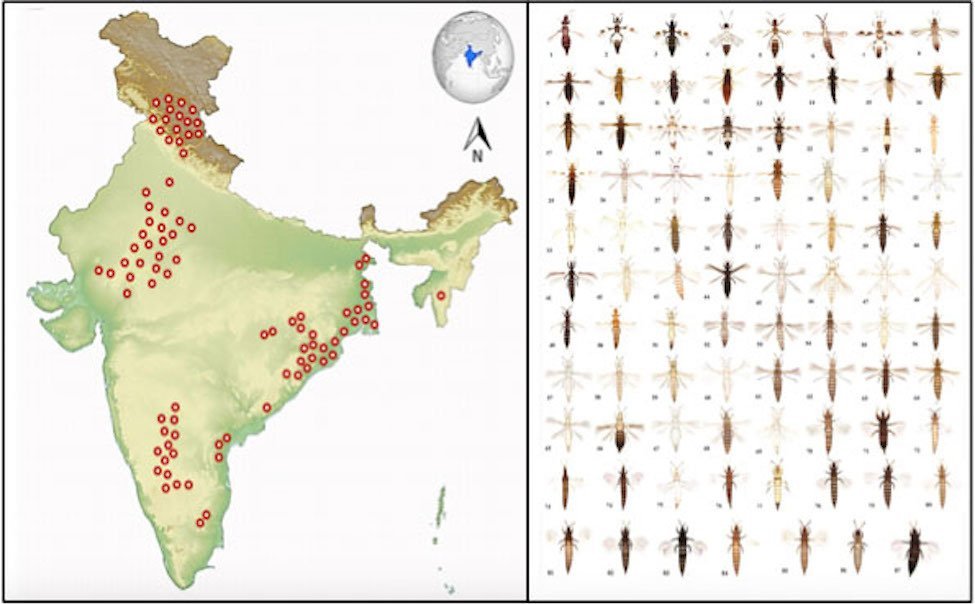
In a new study published in Scientific Reports, scientists describe a new method to precisely identify a class of plant sucking pests which affect several commercially important crops.
Thrips are tiny plant sucking insects, one to three millimeters in length that cause damage to crops by direct feeding and by transmitting plant viruses. At present, these insects are identified based on their physical features like color and body architecture. A major obstacle in correct identification is their small size and high degree of similarity at some stages of their life cycle. Identifying these insects correctly is important for designing appropriate pest management strategies.
Now scientists at the Centre for DNA Taxonomy, Zoological Survey of India in Kolkata, have developed a DNA barcoding technique to identify thrips insect species in India and found that this technique is effective. It could be of immense value as thrips cause huge losses to crops such as onion, chilli, brinjal, capsicum, watermelon and tomato. Identifying thrips correctly can help design relevant pest management strategies to prevent these losses.
Researchers collected 336 insect samples from 78 locations in India. The sample collection was done for 4 years between 2011 and 2015. In 3 years, they have made a library of 370 DNA sequences that can be used for precisely identifying these plant pests. DNA analysis was done to analyze the sequence of the mitochondrial cytochrome oxidase gene, said Kaomud Tyagi, who is the first author on the study.
“We have standardized and confirmed DNA barcoding method to be used for identifying thrips species correctly. Our study has also revealed that similar looking insects can belong to different species. Identifying species of thrips is now possible at the larval stage or even from a small portion of the body”, said, Vikas Kumar, a member of the research team.
Thrips also leave white streaky trails after feeding on fruits making them unfit for exports. In the long run, using DNA barcoding for identifying thrips could help increase income from exports, believes Kumar. The study will help design appropriate pest management strategies as different species respond to different pesticides and doses.
Sharad Mohan, a scientist at the Indian Agricultural Research Institute, New Delhi, who is not connected to the study agrees. He said, “barcoding is of immense value in validating the diversity of pests in different agro-climatic zone of India. Instead of using conventional taxonomic ways that may take months, barcoding helps in identifying pests that helps recommend and implement specific management protocols without wasting much time.”
Kailash Chandra, Director of ZSI, said “we are starting a new project on large scale barcoding of insect pests and vectors of agricultural and veterinary importance soon”.
This article was originally published by India Science Wire.